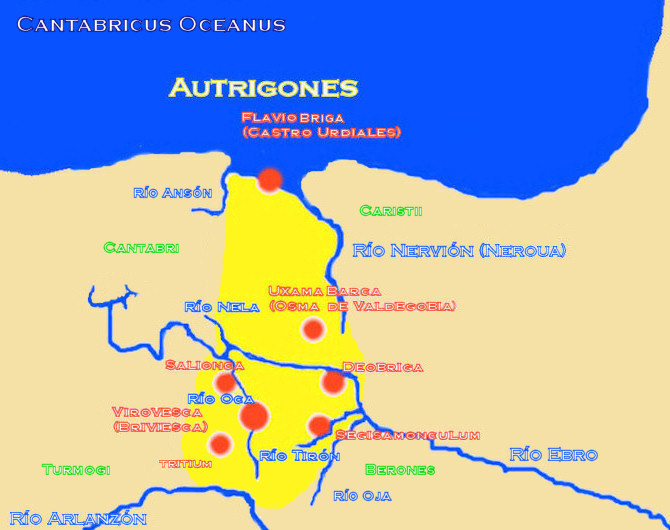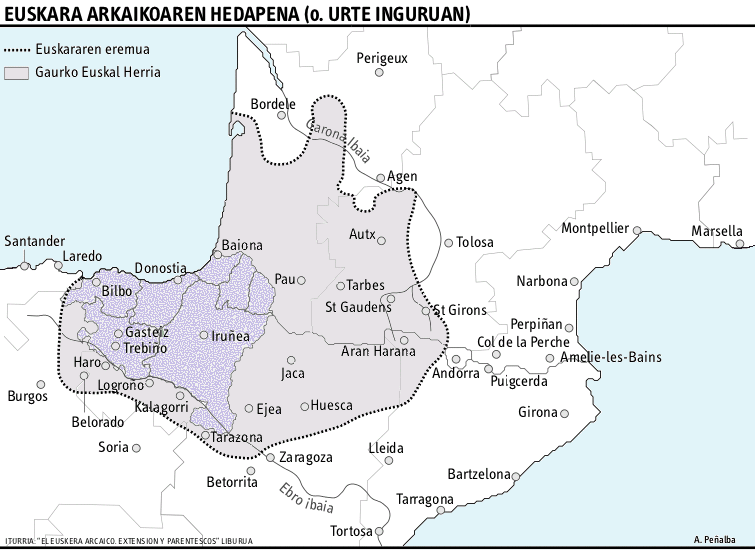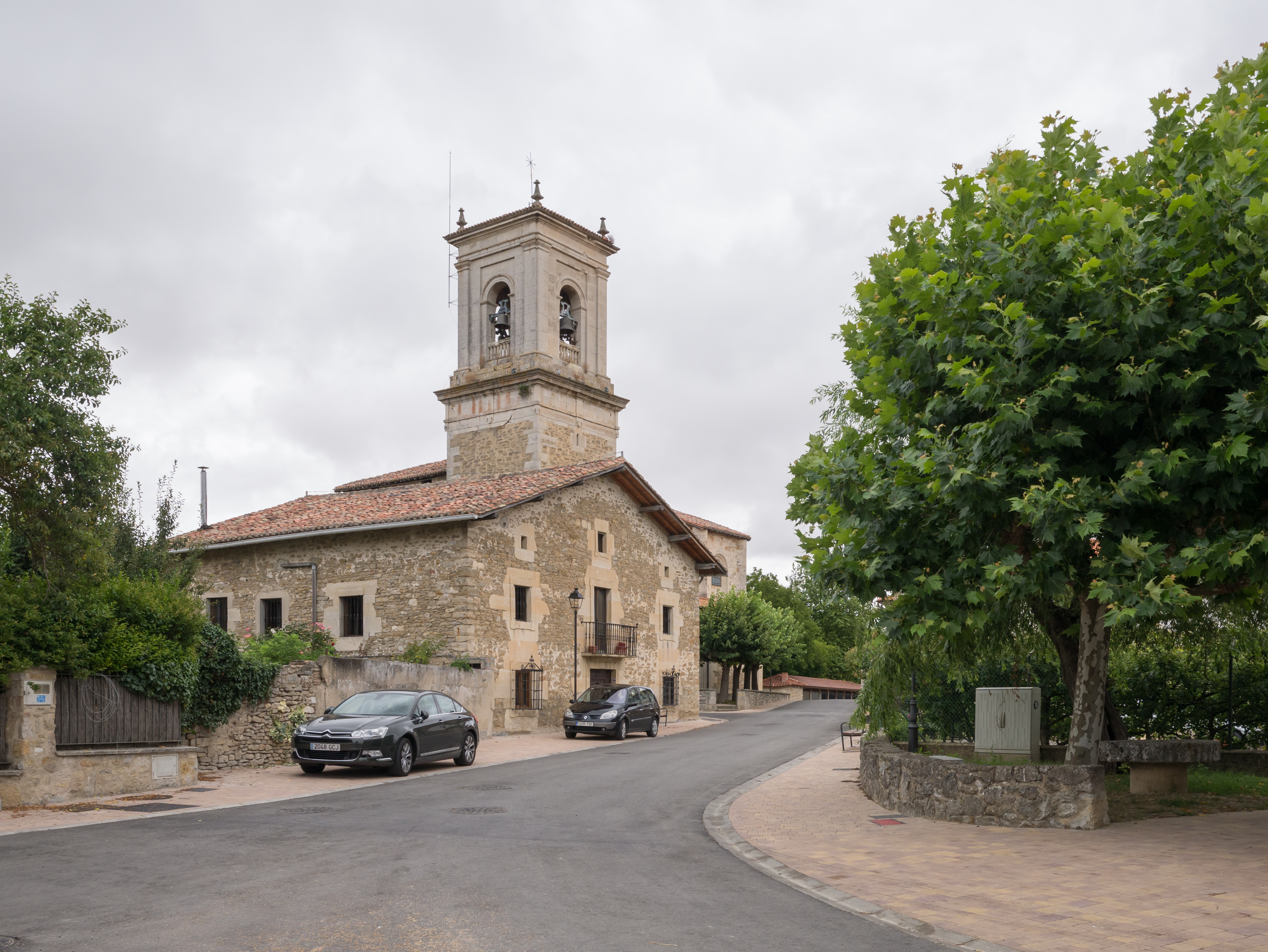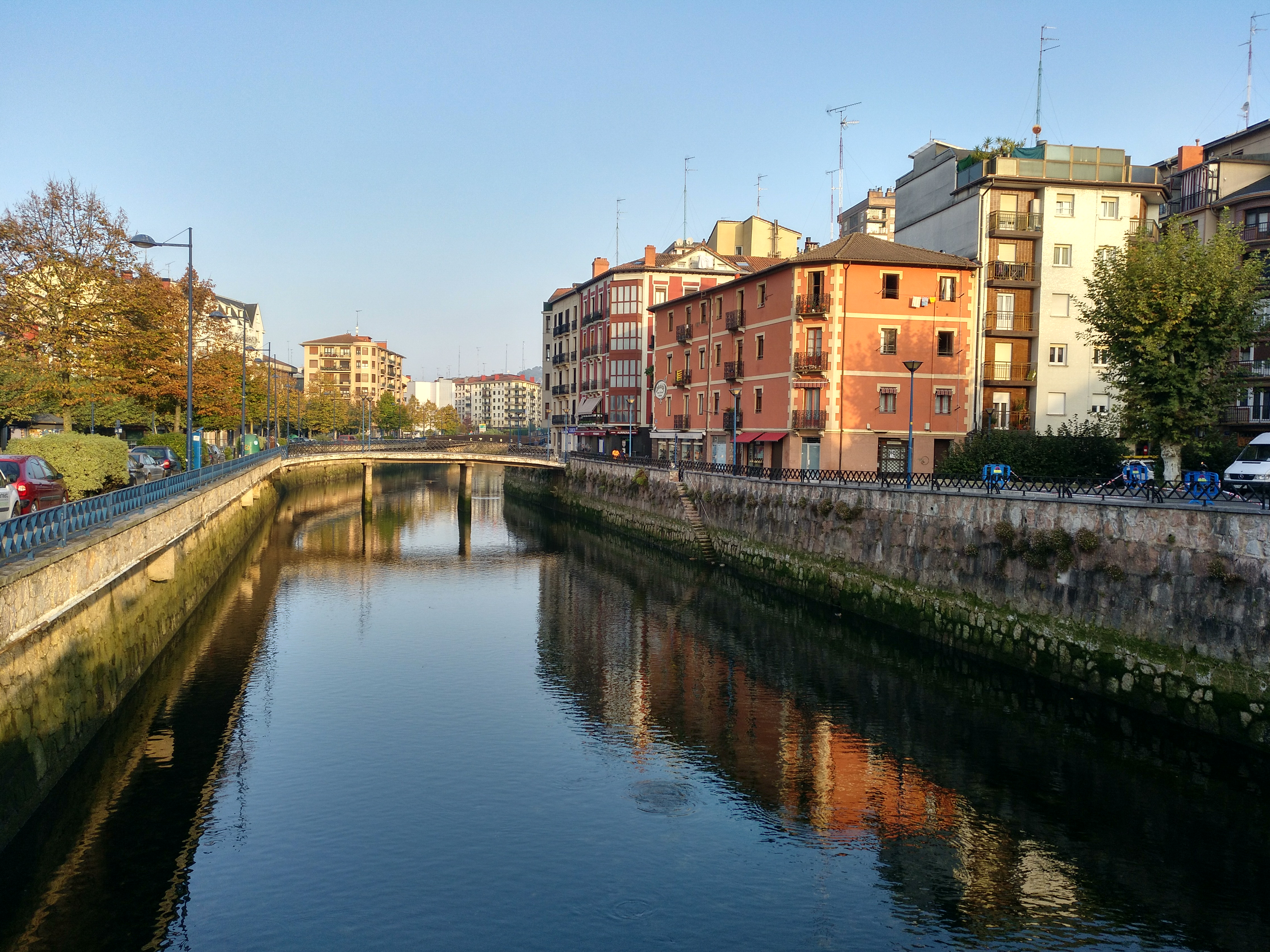|
Caristii
The Caristii were a pre- Roman tribe settled in the north of the Iberian Peninsula, in what today are known as the historical territories of Biscay and Álava, in the Basque Country, northern Spain. Origins Their historical territory today corresponds very well with the extension of the Biscayan dialect of the Basque language, however it is discussed whether the Caristii were actually Aquitanians, related to the Vascones, or if they were Celts, related to tribes such as the Cantabri and Celtiberians and that later suffered a Basquisation. History The Caristii are first mentioned by Roman sources; Pliny the Elder names them ''Carietes'' and places them in the Basque interior territories, what today is the southernmost regions of the Basque Country, while Ptolemy places them between the river Deba and Nervión, present-day provinces of Biscay and Gipuzkoa, with a territory triangle-shaped, reaching the city of Vitoria by the south. Their territory limited with the Varduli ... [...More Info...] [...Related Items...] OR: [Wikipedia] [Google] [Baidu] |
Varduli
The Varduli were a pre- Roman tribe settled in the north of the Iberian Peninsula, in what today is the eastern region of the autonomous community of the Basque Country and western Navarre, in northern Spain. Their historical territory corresponds with current Basque-speaking areas, however it is debated whether the Varduli were actually Aquitanians, related to the Vascones, or if they were Celts, related to tribes such as the Cantabri and Celtiberians and which later underwent Basquisation. Etymology Their ethnonym ''Varduli'' is connected with an area that is referred to in documents from the early Middle Ages as Bardulia, which is identified as the cradle of Old Castile. Julio Caro Baroja, a Spanish anthropologist and linguist declared on his works that the term ''Varduli'' does not have a Basque origin. History The Varduli are mentioned for the first time during Roman times, by Strabo, who called them ''Bardyetai'', and placed them in the Basque coast, between the C ... [...More Info...] [...Related Items...] OR: [Wikipedia] [Google] [Baidu] |
Autrigones
The Autrigones were a pre-Roman tribe that settled in the north of the Iberian Peninsula, in what today is the western Basque Country (western regions of Biscay and Álava) and northern Burgos and the East of Cantabria, Spain. Their territory limited with the Cantabri territory at west, the Caristii at east, the Berones at the southeast and the Turmodigi at the south. It is discussed whether the Autrigones were Celts, theory supported by the existence of toponyms of Celtic origin, such as ''Uxama Barca'' and other with ''-briga'' endings and that eventually underwent a Basquisation along with other neighboring tribes such as the Caristii and Varduli. Location Roman historians as Pomponius Mela and Pliny the Elder located them in the northern region of present-day province of Burgos. Pliny the Elder writes about the "ten states of the Autrigones" and says the only ones worth mentioning are ''Tritium Autrigonum'' (Monasterio de Rodilla, Burgos) and ''Virovesca'' (possibly the p ... [...More Info...] [...Related Items...] OR: [Wikipedia] [Google] [Baidu] |
Vascones
The Vascones were a pre- Roman tribe who, on the arrival of the Romans in the 1st century, inhabited a territory that spanned between the upper course of the Ebro river and the southern basin of the western Pyrenees, a region that coincides with present-day Navarre, western Aragon and northeastern La Rioja, in the Iberian Peninsula. The Vascones are often considered ancestors of the present-day Basques to whom they left their name. Territory Roman period The description of the territory which the Vascones inhabited during ancient times appears in texts of classical authors, between the 1st century BC and the 2nd century AD, such as Livy, Strabo, Pliny the Elder and Ptolemy. Although these texts have been studied as sources of reference, some authors have pointed out the apparent lack of uniformity and also the existence of contradictions within the texts, in particular with Strabo. The oldest document corresponds to Livy (59 BC - AD 17), who in a brief passage of hi ... [...More Info...] [...Related Items...] OR: [Wikipedia] [Google] [Baidu] |
Biscay
Biscay (; eu, Bizkaia ; es, Vizcaya ) is a province of Spain and a historical territory of the Basque Country, heir of the ancient Lordship of Biscay, lying on the south shore of the eponymous bay. The capital and largest city is Bilbao. Biscay is one of the most renowned and prosperous provinces of Spain, historically a major trading hub in the Atlantic Ocean since medieval times and, later on, one of the largest industrial and financial centers of the Iberian peninsula. Since the extensive deindustrialization that took place throughout the 1970s, the economy has come to rely more on the services sector. Etymology It is accepted in linguistics ( Koldo Mitxelena, etc.) that ''Bizkaia'' is a cognate of ''bizkar'' (cf. Biscarrosse in Aquitaine), with both place-name variants well attested in the whole Basque Country and out meaning 'low ridge' or 'prominence' (''Iheldo bizchaya'' attested in 1141 for the Monte Igueldo in San Sebastián). Denominations ''Bizkaia'' ... [...More Info...] [...Related Items...] OR: [Wikipedia] [Google] [Baidu] |
Biscayan Dialect
Biscayan, sometimes Bizkaian ( eu, Bizkaiera, es, Vizcaíno) is a dialect of the Basque language spoken mainly in Biscay, one of the provinces of the Basque Country of Spain. It is named as ''Western'' in the Basque dialects' classification drawn up by linguist Koldo Zuazo, since it is not only spoken in Biscay but also extends slightly into the northern fringes of Alava and deeper in the western part of Gipuzkoa. The dialect's territory bears great similarity to that of the ''Caristii'' tribe, as described by Roman authors. While it is treated as stylish to write in Biscayan and the dialect is still spoken generally in about half of Biscay and some other municipalities, it suffers from the pressure of Spanish. Biscayan was used by Sabino Arana and his early Basque nationalist followers as one of the signs of Basqueness. Sociolinguistic features In the words of Georges Lacombe, because of the special features of this dialect, Euskera could well be divided into two groups ... [...More Info...] [...Related Items...] OR: [Wikipedia] [Google] [Baidu] |
Iruña-Veleia
Veleia was a Roman town in Hispania, now located in the Basque Autonomous Community, Spain. The site is located in the municipality of Iruña de Oca, 10 kilometers west of Vitoria. The town was an important station on the Roman road ''ab Asturica Burdigalam'' that ran parallel to the coast of the Bay of Biscay. At its apogee, the city could have been inhabited by some five to ten thousand people, and apparently went through different cycles of prosperity and decline into the Early Middle Ages until it was finally abandoned. It has been argued (e.g. J.M.Lacarra) that the location of Iruña is actually the ''Victoriacum'' founded by Liuvigild in his campaigns against the Vascones (581), since only a very small portion of the actual town has been unearthed so far by archaeologists. The archaeological site of Iruña-Veleia is the most important from the Roman period in the Basque Country. It was alleged to contain the oldest known texts written in the Basque language as well ... [...More Info...] [...Related Items...] OR: [Wikipedia] [Google] [Baidu] |
Late Basquisation
Late Basquisation is a minority hypothesis that dates the arrival of the first speakers of the Basque language in northeastern Iberia from Aquitaine to the 5th or 6th century AD – as opposed to the mainstream view of it being the last remaining descendant of one of the pre-Indo-European languages of Prehistoric Europe. History The Basque language is a language isolate that has survived the arrival of Indo-European languages in western Europe. Basque (and its ancestors or closely related languages such as Aquitanian) historally occupied a much larger territory, including parts of modern-day Béarn, Aragon, Rioja, Castile south of the Pyrenees, and large parts of modern-day Gascony to the north. Hypothesis The "Late Basquisation" hypothesis set the historical geographical spread of the Basque or the proto-Basque language later in history. It suggests that at the end of the Roman Republic and during the first centuries of the Empire, migration of Basque-speakers from Aquit ... [...More Info...] [...Related Items...] OR: [Wikipedia] [Google] [Baidu] |
Ribera Alta/Erriberagoitia
Ribera Alta/Erriberagoitia ( es, Ribera Alta, eu, Erriberagoitia) is a municipality located in the province of Álava, in the Basque Country of northern Spain , image_flag = Bandera de España.svg , image_coat = Escudo de España (mazonado).svg , national_motto = ''Plus ultra'' (Latin)(English: "Further Beyond") , national_anthem = (English: "Royal March") , i .... Localities The municipality is made up of 25 villages, 21 organized in turn into 20 councils, and four administered directly by the municipality. Bolded locations denote directly-administrated villages. Notes External links RIBERA ALTA / ERRIBERAGOITIA in the Bernardo Estornés Lasa - Auñamendi Encyclopedia Municipalities in Álava {{basqueCountry-geo-stub ... [...More Info...] [...Related Items...] OR: [Wikipedia] [Google] [Baidu] |
Zadorra
The Zadorra is a river tributary of the Ebro in the Basque Country at the north of the Iberian Peninsula. The river flows across province Álava all along (with the exception of Burgos' exclave La Puebla de Arganzon) till it pours into the Ebro near Miranda de Ebro in Burgos' lands. The river's water volume is the largest in Álava, with its basin being the most extensive in the province. Nowadays it provides by means of the Zadorra Reservoir System (comprising reservoirs Uribarri-Ganboa, Urrunaga and Albina) water supply for Vitoria and half of the Basque Autonomous Community. The river rises in the slopes of the Entzia Plateau at the spring known as Los Corrales (municipality of San Millan/Donemiliaga), meandering thereafter across the Alavan Plains to the west (loops around Salvatierra/Agurain) past Vitoria by the north, where it takes a turn to the south heading to the Ebro through La Puebla de Arganzon. Landmarks * The village and iconic castle of Gebara sit by the rive ... [...More Info...] [...Related Items...] OR: [Wikipedia] [Google] [Baidu] |
Iberia 300BC-en
The Iberian Peninsula (), ** * Aragonese and Occitan: ''Peninsula Iberica'' ** ** * french: Péninsule Ibérique * mwl, Península Eibérica * eu, Iberiar penintsula also known as Iberia, is a peninsula in southwestern Europe, defining the westernmost edge of Eurasia. It is principally divided between Spain and Portugal, comprising most of their territory, as well as a small area of Southern France, Andorra, and Gibraltar. With an area of approximately , and a population of roughly 53 million, it is the second largest European peninsula by area, after the Scandinavian Peninsula. Name Greek name The word ''Iberia'' is a noun adapted from the Latin word "Hiberia" originating in the Ancient Greek word Ἰβηρία ('), used by Greek geographers under the rule of the Roman Empire to refer to what is known today in English as the Iberian Peninsula. At that time, the name did not describe a single geographical entity or a distinct population; the same name was use ... [...More Info...] [...Related Items...] OR: [Wikipedia] [Google] [Baidu] |
Arkaia
Arkaia (occasionally spelled in Spanish as ''Arcaya'') is a hamlet on the eastern side of Vitoria in the Basque province of Álava. In 2017 it had 78 inhabitants. History Roman remains There are archeological remains of a Roman bathhouse that were discovered in the 18th century by Lorenzo Prestamero. Only a fraction of the Roman settlement remains, which covered an estimated 19 hectares of land. In 1976 the archaeologist Ramón Loza Lengaran dug the bathhouse remains and categorized them as likely for public use. Recent digs have indicated that the area was inhabited at least from 300 BC onwards. The Roman remains have been linked with the town of Suessatio-Suestatio that appears in classic sources.Mostly in the Antonine Itinerary, in the Ravenna Cosmography and Ptolomeo The proximity to the Roman road linking Asturica Augusta with Burdigala known as Ab Asturica Burdigalam could explain the size of the settlement. During the Middle Ages pilgrims from Europe started using the old ... [...More Info...] [...Related Items...] OR: [Wikipedia] [Google] [Baidu] |
Gipuzkoa
Gipuzkoa (, , ; es, Guipúzcoa ; french: Guipuscoa) is a province of Spain and a historical territory of the autonomous community of the Basque Country. Its capital city is Donostia-San Sebastián. Gipuzkoa shares borders with the French department of Pyrénées-Atlantiques at the northeast, with the province and autonomous community of Navarre at east, Biscay at west, Álava at southwest and the Bay of Biscay to its north. It is located at the easternmost extreme of the Cantabric Sea, in the Bay of Biscay. It has of coast land. With a total area of , Gipuzkoa is the smallest province of Spain. The province has 89 municipalities and a population of 720,592 inhabitants (2018), from which more than half live in the Donostia-San Sebastián metropolitan area. Apart from the capital, other important cities are Irun, Errenteria, Zarautz, Mondragón, Eibar, Hondarribia, Oñati, Tolosa, Beasain and Pasaia. The oceanic climate gives the province an intense green co ... [...More Info...] [...Related Items...] OR: [Wikipedia] [Google] [Baidu] |







